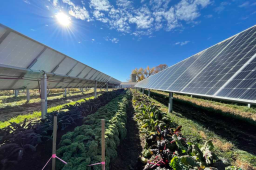Sonoma Raceway isn't bum frak Missouri or Arizona or Nebraska. I stand by the argument that they are impractical for much of RURAL North America unless you want intensive management. Homesteader/small holder types, sure. I don't see any farm of a decent size running them because they are too intensive to deal with. They die if you look at them the wrong way and they have no built in self-defense.
Edit: I would love if this weren't the case as I love lamb and mutton and it's expensive here.
2nd edit: methane/smeshane. Grassland needs ruminant animals for healthy soil...and there's no longer millions of bison to perform this function.





